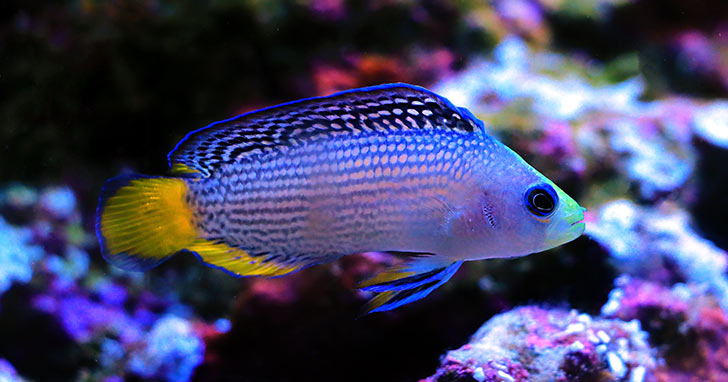
Discover the Vibrant World of DottybacksA Good Fit for Your Semi-aggressive Saltwater Aquarium What type of fish is a Dottyback?
Dottybacks are small marine fish that grow to about 3” in length. In the Pseudochromidae family, there are four sub-families, 16 genera, and over 100 species. Dottybacks are hardy, adjust well to captivity, and require an aquarium with plenty of rockwork that provides caves and crevices in which they can hide. There are many varieties of Dottybacks and are prized among aquarists because of their vibrant coloration. Successful captive breeding programs have allowed aquarists to enjoy more varieties that are easily acclimated and allow them to be offered at affordable costs. Are Dottybacks aggressive?
They can be aggressive when protecting their territory, especially among conspecifics. If keeping more than one, they should be added at the same time, and the aquarium should be large enough that each can establish its own territory. Dottyback habitat
The aquarium should have a lid, as Dottybacks are known jumpers. They are reef safe with caution because they may eat small crustaceans or invertebrates. Dottyback tankmates
Dottyback tankmates selected should also be semi-aggressive in temperament and large enough that they do not use the same crevices to hide in as the Dottybacks do. Can Dottybacks change sex?
Dottybacks are hermaphrodites and, depending on the species, can have both male and female reproductive organs, or are born female with the ability to convert to a male. What do Dottybacks eat?
Dottybacks are carnivores that are easy to feed and require a varied diet rich in meaty foods, for optimal health and ideal coloration. Some species are known bristle worm eaters, adding to their attractive qualities. What is a good Dottyback species to keep in my aquarium?
Let’s explore some of the colorful and diverse species of Dottybacks offered by LiveAquaria®. What is a good Dottyback species to keep in my aquarium?
Let’s explore some of the colorful and diverse species of Dottybacks offered by LiveAquaria®. 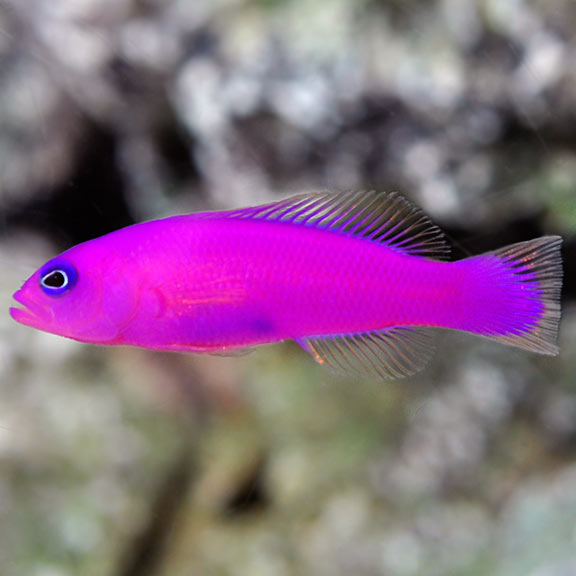
Purple Dottyback Pseudochromis porphyreus This Dottyback is also known as the Magenta Dottyback or Purple Pseudochromis. When keeping one in an aquarium, a minimum size of 30 gallons is sufficient. In addition to other members of the same species, this Dottyback can show aggression towards other fish with similar body shape. 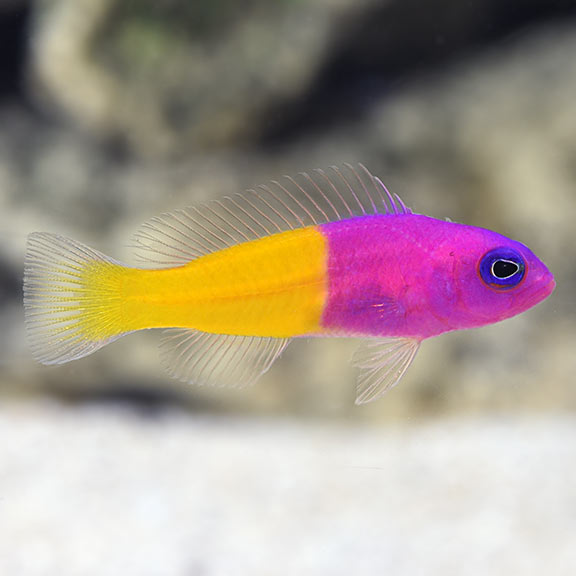
Bicolor Dottyback Pictichromis paccagnellae This Dottyback is also called the Bicolor Pseudochromis or Royal Dottyback. It has two bold colors; the anterior portion is purple, and the posterior portion is bright yellow. This feisty Dottyback will not be intimidated by other fish and will defend its territory against fish two to three times its size. It will also eat ornamental shrimp and is a predator of nuisance bristle worms. 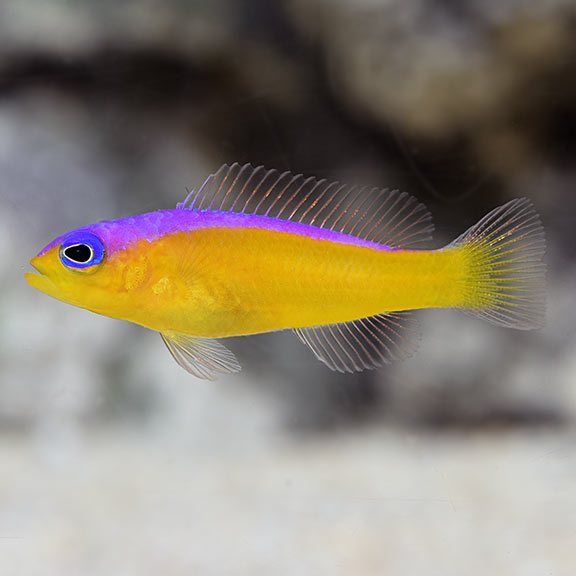
Purple Stripe Dottyback Pseudochromis diadema Also known as the Diadem Dottyback or Diadem Pseudochromis, this Dottyback is primarily yellow and has a purple stripe running the length of the body along the dorsal fin. Because of its temperament, it should be housed with moderately aggressive fish that are larger than itself. It is known to eat ornamental shrimp. 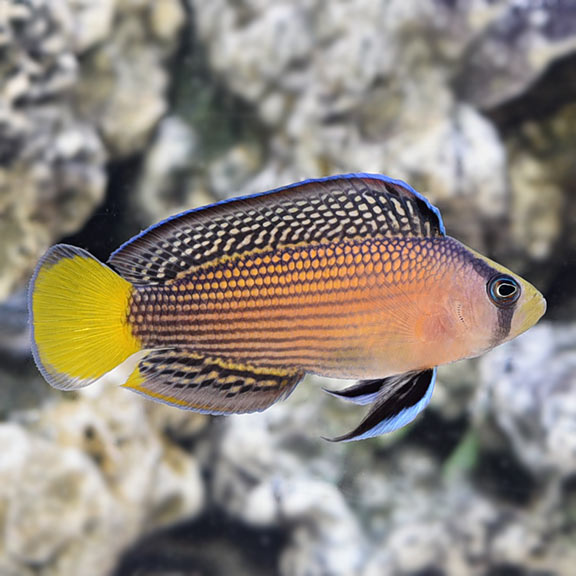
Splendid Dottyback Manonichthys splendens The Splendid Dottyback, also known as the Splendid Pseudochromis, has a blue body covered with white to light yellow spotting. It also has a yellow tail and yellow that displays on its face between two dark bands that run vertically above and below its eyes. 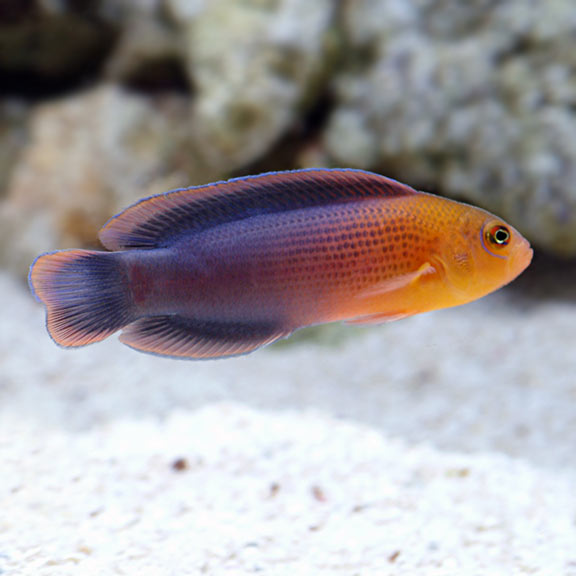
Dilectis Dottyback Pseudochromis dilectus The Dilectis Dottyback is also known as the Sri Lanka Dottyback, named for the region in which it originates. They have an elongated, dark colored body, with beautiful white accents. They require an aquarium with plenty of live rock for hiding places. It is recommended to house only one of this species per aquarium, unless the aquarium is very large, and they are acclimated at the same time. An added bonus is that they may help control bristle worms. With care taken in researching the Dottybacks’ requirements such as recommended tankmates, diet, and habits, aquarists can create a dynamic showpiece in their saltwater or reef aquarium. A tank with added color, interest and activity will be their reward. Related Articles
|
|
|


